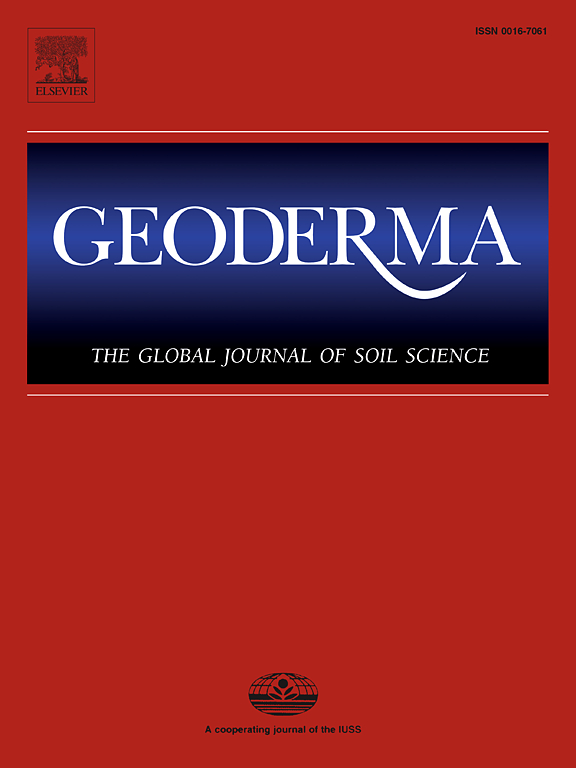Climate and human activities alter coupling of soil macro- and micronutrients: Evidence from a long-term experiment in typical steppes
IF 5.6
1区 农林科学
Q1 SOIL SCIENCE
引用次数: 0
Abstract
Soil nutrients are essential for ecosystem function and food production. However, the long-term dynamics and ecological drivers of soil macro- and microelements, as well as their relationships, remain virtually unknown, especially in varying precipitation contexts. Here, we conducted a long-term experiment in typical steppes to explore the universal and differential mechanisms of soil macro- and microelements along the precipitation gradient. Our results showed decreases in soil Zn and Fe stocks, alongside increases in Cu, SOC, and STN stocks over time. From north to south, the temporal stability of SOC, STN, Cu and Zn stocks generally increased. Additionally, compared to the humid site, soil macronutrients showed stronger coupling with micronutrients at the arid site, especially Fe, followed by Mn, Zn, Cu. The sensitivity of soil macro- and microelements to climate change and human activities were correlated with the local background precipitation. Precipitation fluctuation, GDP per capita and current precipitation were significant factors contributing to the variation in soil macro- and microelements stock in the north, center and south. Climate explained 46%, 19%, and 16% of nutrient coupling variation in the north, center, and south sites, respectively. Across all sites, human activities explained 74% of variation. Altogether, our findings provide an overview of long-term soil macro- and microelement distribution, their coupling relationships, and driving factors under different precipitation contexts, which is important for grassland management and food production in future global change scenarios.
气候和人类活动改变土壤宏量和微量营养素的耦合:来自典型草原长期实验的证据
土壤养分对生态系统功能和粮食生产至关重要。然而,土壤宏量和微量元素的长期动态和生态驱动因素及其关系,特别是在不同的降水背景下,仍然几乎未知。本文通过对典型草原的长期试验,探讨了土壤宏量元素和微量元素在降水梯度上的普遍和差异机制。结果表明,随着时间的推移,土壤Zn和Fe储量减少,Cu、SOC和STN储量增加。从北向南,土壤有机碳、氮化碳、铜和锌储量的时间稳定性总体增强。此外,与湿润地相比,干旱地土壤宏量元素与微量元素的耦合更强,其中以铁为主,其次是锰、锌、铜。土壤宏量元素和微量元素对气候变化和人类活动的敏感性与局地背景降水相关。降水波动、人均GDP和当期降水量是影响南北三地土壤宏微量元素储量变化的显著因子。气候分别解释了北、中、南三样地营养耦合变化的46%、19%和16%。在所有站点中,人类活动解释了74%的变异。总之,我们的研究结果概述了不同降水背景下土壤宏、微量元素的长期分布、耦合关系和驱动因素,这对未来全球变化情景下的草地管理和粮食生产具有重要意义。
本文章由计算机程序翻译,如有差异,请以英文原文为准。
求助全文
约1分钟内获得全文
求助全文
来源期刊

Geoderma
农林科学-土壤科学
CiteScore
11.80
自引率
6.60%
发文量
597
审稿时长
58 days
期刊介绍:
Geoderma - the global journal of soil science - welcomes authors, readers and soil research from all parts of the world, encourages worldwide soil studies, and embraces all aspects of soil science and its associated pedagogy. The journal particularly welcomes interdisciplinary work focusing on dynamic soil processes and functions across space and time.
 求助内容:
求助内容: 应助结果提醒方式:
应助结果提醒方式:


